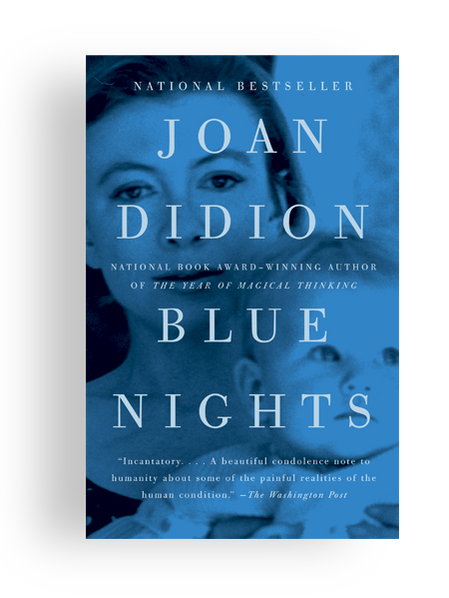Blue Nights
BIOGRAPHY & MEMOIR
May 29, 2012
Publication Date:
Publisher:
Knopf Doubleday Publishing Group
ABOUT THE BOOK
A work of stunning frankness about losing a daughter, from the bestselling, award-winning author of The Year of Magical Thinking and Let Me Tell You What I Mean.
Richly textured with memories from her own childhood and married life with her husband, John Gregory Dunne, and daughter, Quintana Roo, this new book by Joan Didion is an intensely personal and moving account of her thoughts, fears, and doubts regarding having children, illness and growing old. As she reflects on her daughter’s life and on her role as a parent, Didion grapples with the candid questions that all parents face, and contemplates her age, something she finds hard to acknowledge, much less accept. Blue Nights—the long, light evening hours that signal the summer solstice, “the opposite of the dying of the brightness, but also its warning”—like The Year of Magical Thinking before it, is an iconic book of incisive and electric honesty, haunting and profound.
Read an Excerpt
In certain latitudes there comes a span of time approaching and following the summer solstice, some weeks in all, when the twilights turn long and blue. This period of the blue nights does not occur in subtropical California, where I lived for much of the time I will be talking about here and where the end of daylight is fast and lost in the blaze of the dropping sun, but it does occur in New York, where I now live. You notice it first as April ends and May begins, a change in the season, not exactly a warming—in fact not at all a warming—yet suddenly summer seems near, a possibility, even a promise. You pass a window, you walk to Central Park, you find yourself swimming in the color blue: the actual light is blue, and over the course of an hour or so this blue deepens, becomes more intense even as it darkens and fades, approximates finally the blue of the glass on a clear day at Chartres, or that of the Cerenkov radiation thrown off by the fuel rods in the pools of nuclear reactors. The French called this time of day “l’heure bleue.” To the English it was “the gloaming.” The very word “gloaming” reverberates, echoes— the gloaming, the glimmer, the glitter, the glisten, the glamour—carrying in its consonants the images of houses shuttering, gardens darkening, grass-lined rivers slipping through the shadows. During the blue nights you think the end of day will never come. As the blue nights draw to a close (and they will, and they do) you experience an actual chill, an apprehension of illness, at the moment you first notice: the blue light is going, the days are already shortening, the summer is gone. This book is called “Blue Nights” because at the time I began it I found my mind turning increasingly to illness, to the end of promise, the dwindling of the days, the inevitability of the fading, the dying of the brightness.
Blue nights are the opposite of the dying of the brightness, but they are also its warning.
Excerpted from Blue Nights by Joan Didion. Copyright © 2011 by Joan Didion. All rights reserved. No part of this excerpt may be reproduced or reprinted without permission in writing from the publisher.




















